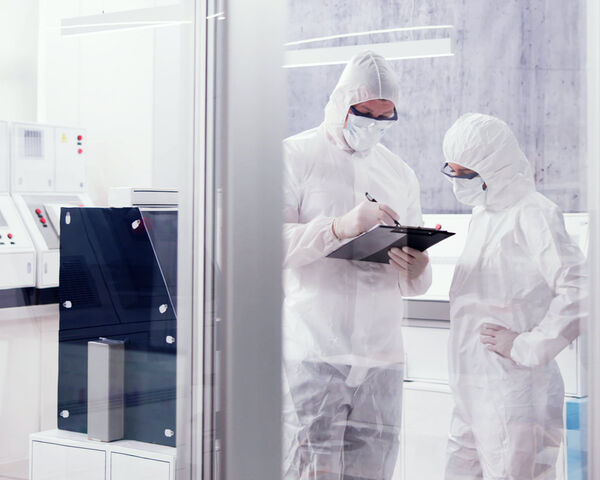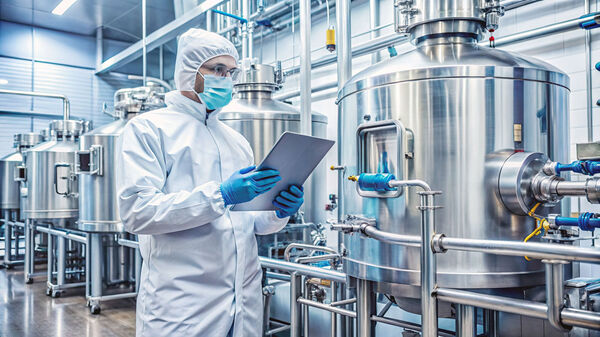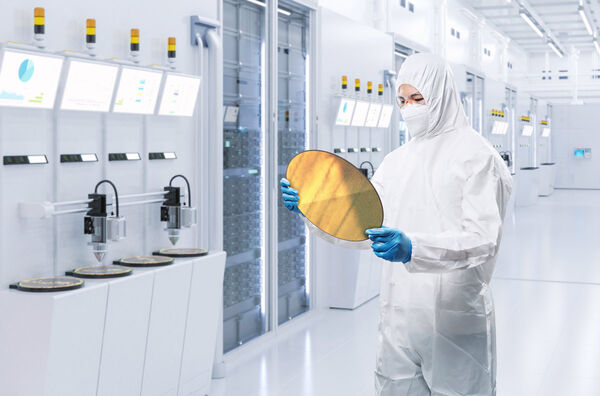Spot-checking measurements of environmental conditions
Field spot-checking is a common way to determine...
Reduce the risk of ambient conditions exceeding or falling below specified tolerance limits and ensure the auditability and compliance of your pharmaceutical and biotechnological cleanrooms.
With our powerful measuring devices and robust solutions, we meet your cleanroom requirements and help ensure your systems operate flawlessly.
Cleanrooms must maintain a constant positive pressure compared to neighboring areas from which contaminated air could flow in. This is not only required by the relevant standard ISO 14644-4; Every expert knows that air conditions can quickly deteriorate if the overpressure drops even temporarily to a few Pascals...


A consultant received an HPP272 probe from Vaisala in combination with the Indigo 201 transmitter for testing purposes. In his work, he not only qualifies for devices and environments, but also for biodecontamination cycles and protocols. When he was given the opportunity to evaluate the Vaisala hydrogen peroxide probe in combination with the Indigo 201 transmitter, he may have been using his current...
Fluid bed drying is a very effective method of solid particle drying. The surface of each individual particle is exposed for drying by suspending it in the air flow resulting in better heat transfer and shortened drying time. A homogeneous product temperature and a uniform drying of the product are achieved through the continuous and thorough mixing and controlling of the inlet and outlet drying air.
Accurate humidity monitoring of the drying air is needed to optimize...


Whether in the production of microchips or the final assembly of integrated circuits – precise measurements are the key to high quality and reproducible results. Controlling humidity is particularly crucial.
A controlled environment – crucial at the nanoscale
At the nanometer scale, even minimal deviations can have serious consequences. Semiconductor components such as chips and circuit boards are extremely sensitive to humidity – therefore, environmental conditions must be monitored and controlled with the utmost precision. Water is one of the most significant contaminants in semiconductor manufacturing; unfavorable humidity conditions are estimated to be responsible for up to 25% of revenue losses.
Reliable sensors therefore play a key role – a small investment with a big impact that ensures that systems and production environments operate within optimal tolerances.
Wafer Polishing & Cleaning
During this phase, high humidity prevails, combined with aggressive chemicals – both of which pose a challenge for precise measurements. The compact HMP9 probe is ideally suited due to its fast response time, chemical-resistant design, and integrated cleaning through chemical outgassing. For OEM applications, the HMM170 module is ideal for easy integration.
Wafer Coating & Exposure
Laser-based systems react sensitively to the smallest environmental variations. The modular Indigo520 platform, combined with the tool-free HMP3 probe, is ideal for cleanroom environments. Additional measurement parameters such as CO₂ or dew point can be flexibly added.
Wafer Singulation & Testing
Dew point and humidity must be precisely monitored to avoid condensation during critical phases such as tape removal or high-temperature testing. Compact sensors such as the DMT143 (–70°C to +60°C) or the DMT152 (for extreme dry conditions down to –80°C dew point) offer auto-calibration and can be easily integrated into machines.
Process Gas Monitoring
Process gases such as nitrogen and argon must be absolutely dry to avoid contamination. Vaisala's DRYCAP® sensors offer fast response times, high long-term stability through auto-calibration, and precise measurements combined with polished stainless steel sampling cells.

Consistent humidity management not only protects equipment and processes, but also increases product quality and production yield. With high-quality sensors and transmitters, humidity-related risks can be minimized, operating costs reduced, and the entire production process more efficient.